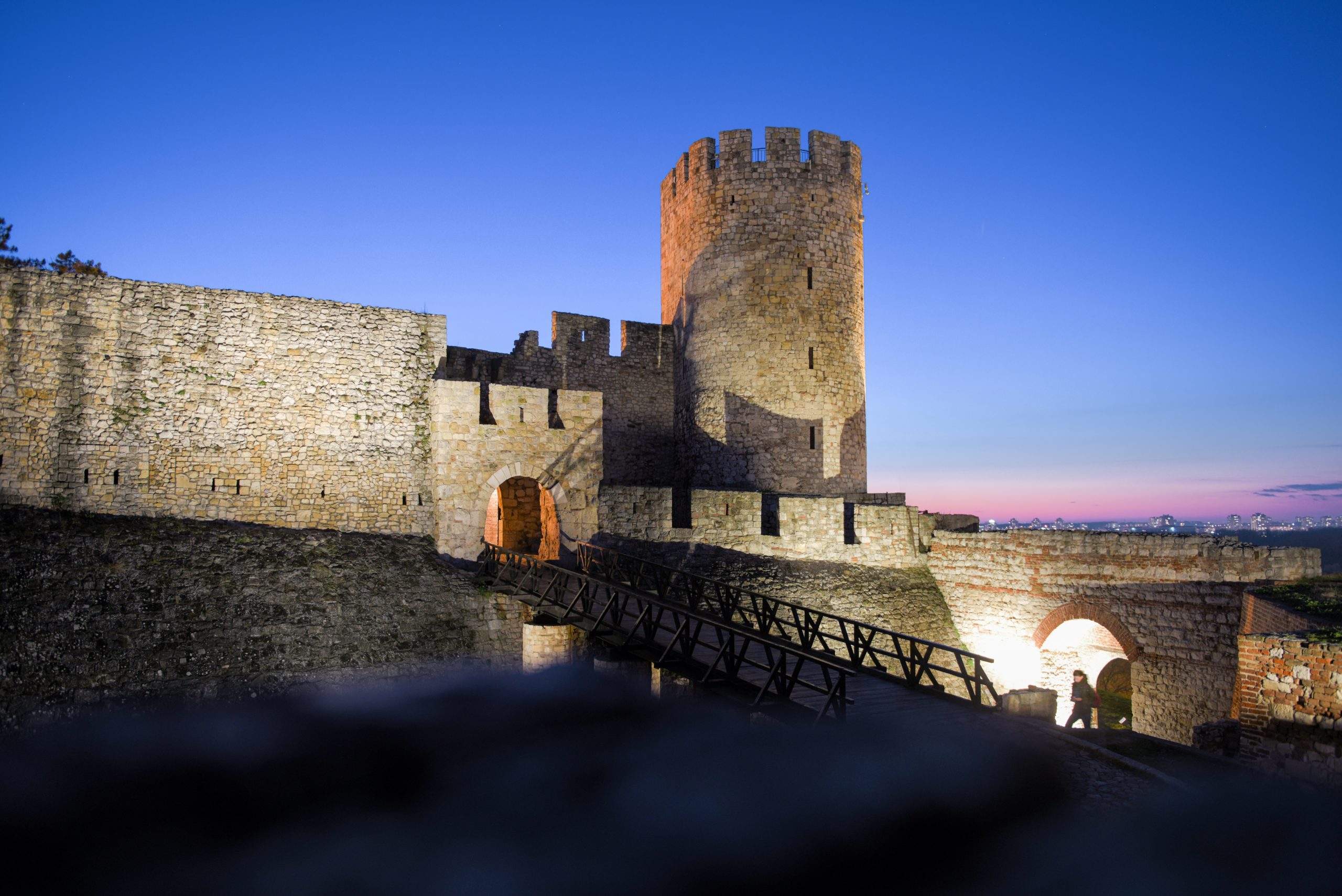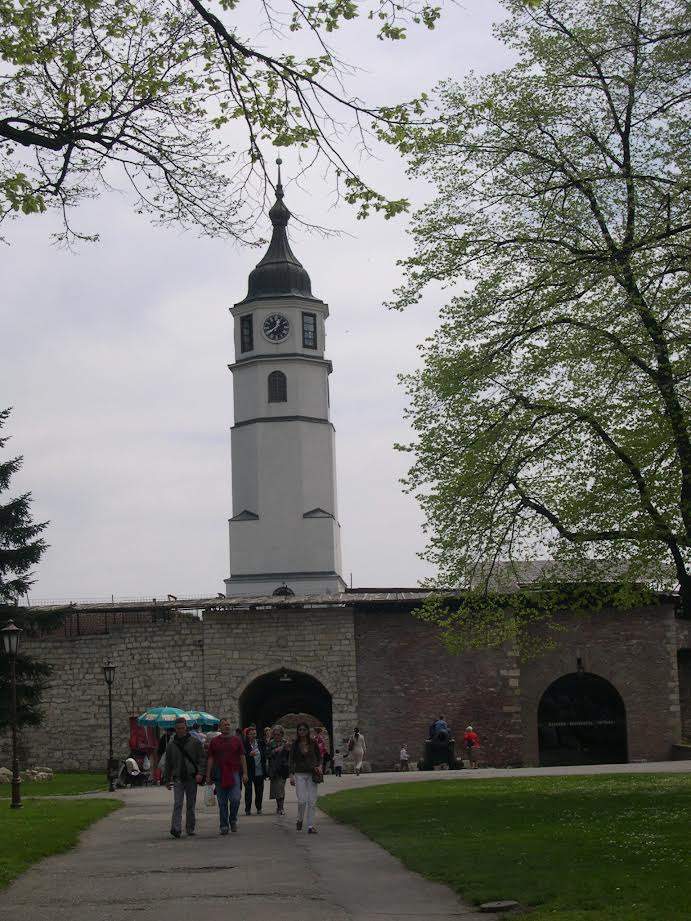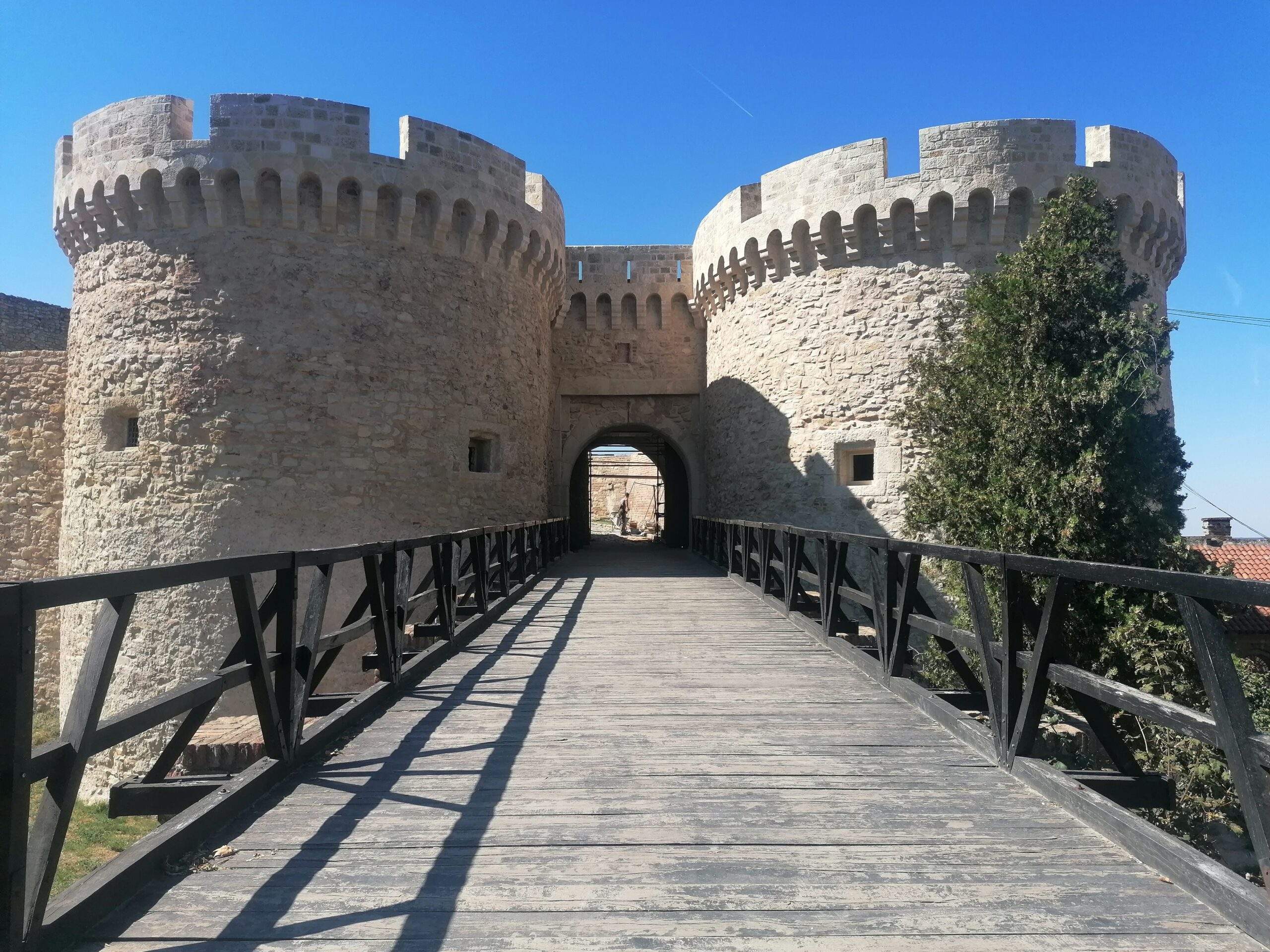Belgrade Fortress
Located on the site with traces of human activity dating back to the Neolithic period, the Belgrade Fortress stands proudly at the confluence of the Sava and Danube rivers. It was constructed over the period from the 1st to the 18th century, evolving from the ancient Singidunum to the Slavic Belgrade, serving as a monumental defensive structure. It serves as a sort of museum of Belgrade’s historical development, consisting of the Upper and Lower Towns, as well as the Kalemegdan Park.
In the late 1st century, a Roman fort-kastrum IV of the Flavian legion was built at this location due to its exceptional strategic position within southeastern Europe. After being damaged by the Goths and Huns, the fort was rebuilt during the early decades of the 6th century, only to be destroyed by the Avars and Slavs later on.
Throughout different periods, the Belgrade Fortress underwent renovations and demolitions, transitioning from Roman to Serbian ramparts, which later evolved into Turkish and Austrian fortifications. In the 12th century, the Byzantine Emperor Manuel Komnenos erected a new castle on the Roman ruins, while in the early 14th century, this small fortress on the hill expanded to the riverbanks.
Under the leadership of Despot Stefan Lazarević, Belgrade became the new Serbian center, fortified with spacious walls of the Upper and Lower Towns. Within the fortress, the Despot’s Palace was erected, and a war port was built along the Sava. From the Turkish conquest in 1521 until the end of the 17th century, the Belgrade Fortress did not undergo significant expansion. Access to the medieval town was ensured from the eastern side, through the Zindan Gate and the Despot’s Gate of the Upper Town, while the main gates - Stambol Gate and Sahat Gate led to today’s Knez Mihailova and Uzun Mirkova streets.
Despot’s (inner and outer) gate, located next to the Dizdar Tower, built during the rule of Despot Stefan Lazarević in the 15th century, served as the main entrance.
The Great Staircase with a terrace, located in the Southwest Fortress Front area, was redesigned during extensive works in Kalemegdan Park after World War I, as part of the conceptual project for the extended Sava promenade, leading to the King’s Gate and the Western part of the Upper Town of Belgrade Fortress.
Phase II of semi-bastion III of the eastern front of the Belgrade Fortress is also part of the cultural heritage “Belgrade Fortress”. The emergency intervention project included conservation-restoration works on the Phase and the auxiliary steel staircase.
The complex of the Clock Tower and Baroque Gate, located in the heart of the Belgrade Fortress, represents an exceptional monument of the past, indicating the various periods and transformations the city has undergone. The Clock Tower, an impressive building 26 meters high, was built during the 18th century under the rule of the Habsburg Monarchy, and its sophisticated clock mechanism, extremely accurate for the standards of that time, served as the basis for time measurement in the city, while the tall silhouette of this tower became a recognizable symbol of Belgrade. Nearby, the Baroque Gate further embellished the complex, with architecture featuring rich ornamentation and details indicating the influences of the Baroque style.
Nebojša Tower is located in the Lower Town of the Belgrade Fortress, at the junction of the Riverside and Northeastern ramparts, at the entrance to the former city Danube port. The original Nebojša Tower represented the largest and most important tower of medieval Belgrade. The present octagonal tower on four floors, towering 22 meters high, is believed to have been built by the Hungarians in 1456, after the unsuccessful siege of Belgrade by the Turks. Immediately after being built, it was called Temišvar or White Tower and played a crucial role in protecting the northeastern part of the city. Over the centuries, it has been destroyed and reconstructed several times, its role changing from a military fortress to a mass grave and dungeon, leaving us with a significant part of the history of the Belgrade Fortress.
We participated in the preservation of the valuable cultural and historical heritage of Belgrade Fortress through the following projects:
- Implementation of conservation and restoration works on the Belgrade Fortress itself.
- Reconstruction, conservation, and restoration of part of the Sava promenade from the Grand Staircase to the ravelin of the King’s Gate, including Phase I - which includes the Grand Staircase and the Veliki Kalemegdan Park.
- Conducting reconstruction, conservation, and restoration of the extension of the Sava promenade towards the Great Ravelin, with additional steps for structural repair and reinforcement of the Vidikovac structure and promenade - Phase II.
- Execution of reconstruction and restoration works on Despot’s Gate.
- Execution of conservation and restoration works on Phase II of semi-bastion III of the eastern front - near Jakšić Tower.
- Restoration of the ramparts of the Belgrade Fortress.
- Restoration of the Sava Gate in the Lower Town.
- Restoration works on Bastion I of the southeastern front.
- Execution of restoration works on the Savska Padina Bastion.
- Implementation of conservation and restoration works on the complex of the Clock Tower and Baroque Gate, as well as Nebojša Tower.
- Restoration of the perimeter walls of the Great Powder Magazine, and many other significant accompanying steps.
Year:
2003-2023Location:
Belgrade, SERBIALocation:
Belgrade, SERBIAConstruction Period:
2003-2023Client:
JP Beogradska Tvrđava




